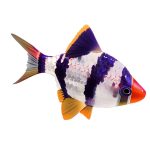THC in Grams: That’s How “They” Discuss Delta 8 THC in Dogs






There are NO articles on the Internet that SPECIFICALLY address the use of THC-Isomer Delta 8 in dogs, canines. There ARE however hundreds of articles that have been mashed up, and TITLED to contain information about THC isomer Delta 8 – however ALL of those articles are variations of practically a SINGLE article that appeared on a University website, which was written by biased authors providing disinformation thusly:
In other words, the articles are a DISINFORMATION effort to demonize Delta-8 THC Isomer use in dogs simply by attributing research on THC overdose as symptoms of any THC Delta 8 isomer dosing. Practically all instances of this information end up by suggesting the purchase of a “safer” CBD Product from the website. Delta 8 THC is dangerous? Nothing could be further from the truth.
In fact, the LD50 of THC Isomer Delta 8 in dogs is THIRTY TIMES the doses that you’d actually use for therapeutic effect in dogs.
Let’s look at Delta 8 use in dogs. Specifically: DELTA 8 isomer of THC, by mouth, in dogs. Not full THC. And not at overdose.

Interesting Summary Points:


When the kidney is failing, there are two “”numbers” that increase, which give a “measurement” of okayness. There are other numbers that matter, too of course.
The BUN is a number that can be “sky high” without portending the end of the dog. There is no “high” that signaled the end of the dog. So I don’t prognosticate based on that number.
The CREATININE is a key number to judge cases by. “IN general” a CREAT over 4.0 after fluid therapy and diagnosing “other reasons” for the kidney disease; portends a poor prognosis.
However, if the dog has Leptospirosis or Kidney infection or is young, or is responding to therapy – IT DOES NOT MATTER what the Creatinine is; because the case is already exceptional and treatments are more likely to work.
Non-traditional modalities like TUMS, Baking Soda, Vitamin C, and a good multivitamin all have benefits for Kidney failure cases. Learn how:

Canine ectropion is a condition that requires attention and appropriate management to prevent potential comorbidities and discomfort in dogs. Recognizing the symptoms early can help prompt veterinary intervention. Treatments range from medical management to surgical correction, depending on the severity of the ectropion. Without treatment, dogs may experience chronic eye problems, discomfort, and a decreased quality of life.
Pretty comprehensive article I wrote, 800 words over at drjohnson.com:



Panting
Good Morning
I'm not sure if I need to be worried…
Last night wasn't as bad as 2 nights ago (photo on sofa) My older dog was panting pretty heavy. She's now lying down, and her heavy breathing almost always slows then. She does well on walks. All other behavior remains the same. Loves to eat and beg. Drinks water. Appetite unchanged. I know air quality has been bad. She's inside (73 degrees) all day except walk and maybe 30 minutes in yard. Usually a walk around the perimeter, then sitting on deck enjoying nature.
Thoughts?

There's nothing that would make me worry very much but if the rapid panting at rest is “really a thing” – ( So noticeable and so suddenly ) that is disruptive AND unexplainable, I can check her out. 'There are at least three things that cause panting, with pain in the lead, existential angst third, and then “decreased pulmonary compliance” in third.
Cardiac failure or pneumonia are practically impossible because other symptoms would be present. In spite of that, the franchise vets love an Xray, Holter monitor, bloodwork, echocardiogram, EKG, MRI and transtracheal wash and culture of recovered fluids. $4,000
Decreased pulmonary compliance is that gradual process where a chest (ribcage) gets more and more stiff. Like a puppy is entirely compressible, and can fit through narrow spaces, an elderly dog has a stiff barrel-chest. It's “normal” as they get older and older and then causes these bouts of shallow panting where the dog acts like nothing-at-all is wrong.
Pain, the most common cause of panting, can be pancreatic, back, hips and knees, even bladder or teeth. But normally the owner has extra-signs to support or tip-us-off to those issues.
“Existential Angst” also known as Sundowners, and Night Pacers, the dogs can be going deaf, and their vision may be closing in, and it causes the dogs to be anxious and even have quick panting bouts (like little anxiety-attacks) and still act “pretty normal” but the owners usually supply that “She seems kinda anxious when these events occur.”



Severe concentric left ventricular hypertrophy (LVH) is a medical condition characterized by the thickening of the muscular walls of the left ventricle of the heart. In this essay, we will delve into the diagnosis, causes, prognosis, treatments, and estimated lifespan of patients with severe concentric LVH.


Hi, Doc Johnson here. With a few words about one of my top five favorite community tank fish. That’s the “Tiger Barb” in any of it’s many colors.